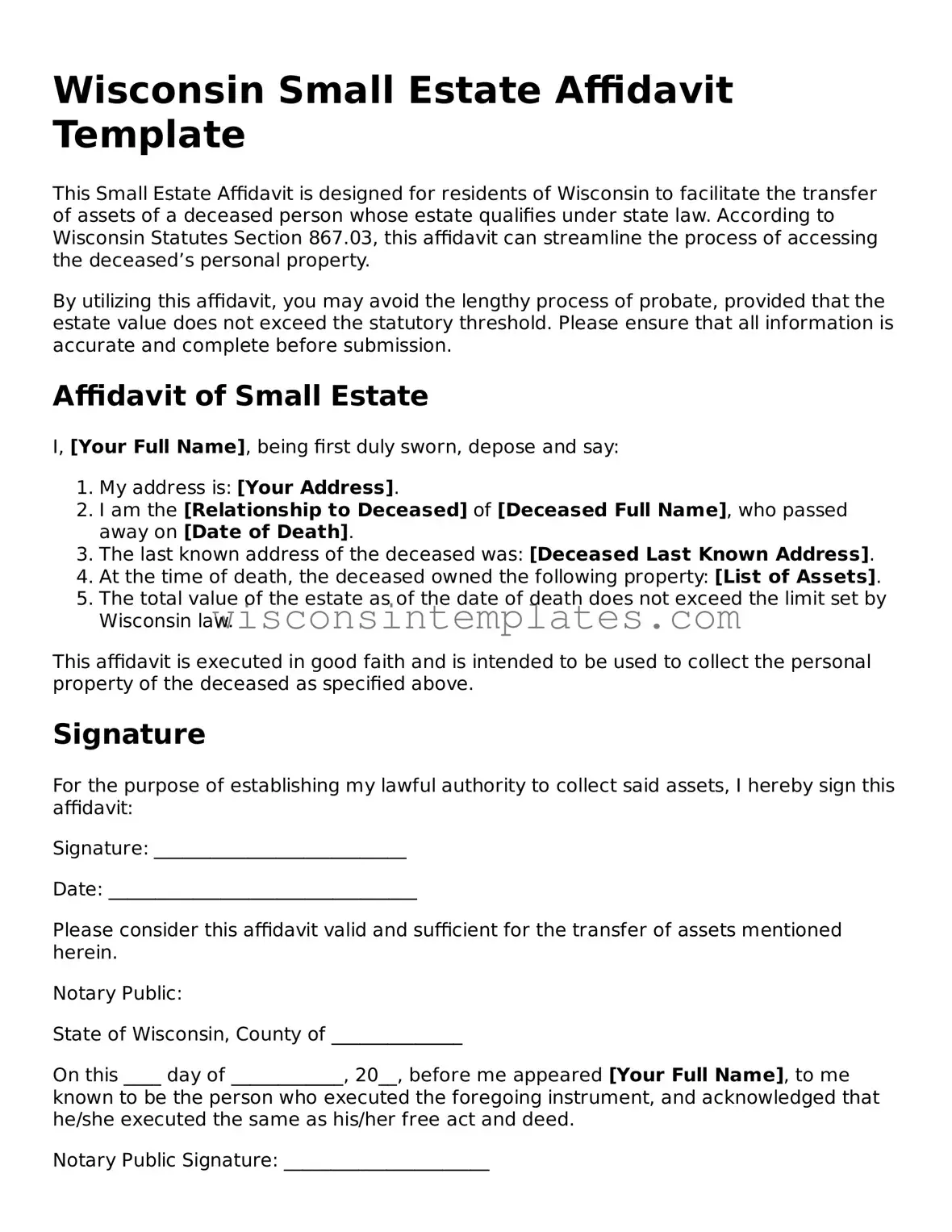Legal Small Estate Affidavit Form for Wisconsin State
The Wisconsin Small Estate Affidavit form is a legal document that allows individuals to claim assets from a deceased person's estate without going through the formal probate process. This form is typically utilized when the total value of the estate is below a specified threshold, simplifying the transfer of assets. By using this affidavit, heirs can efficiently manage the estate while minimizing time and costs associated with probate.
Launch Editor Now
